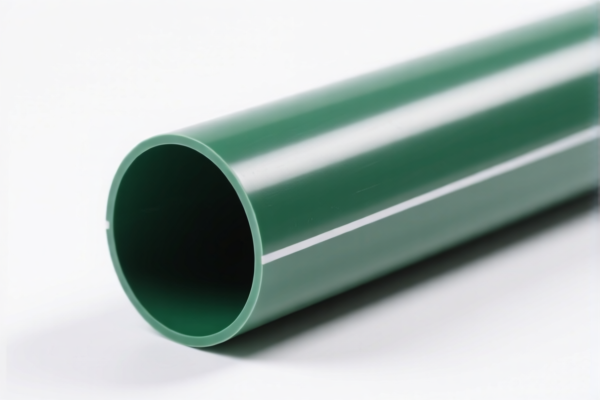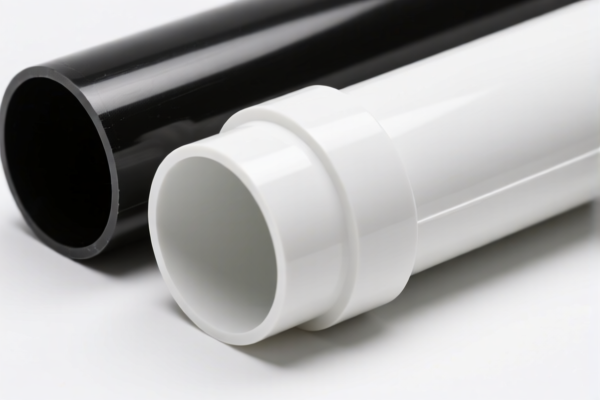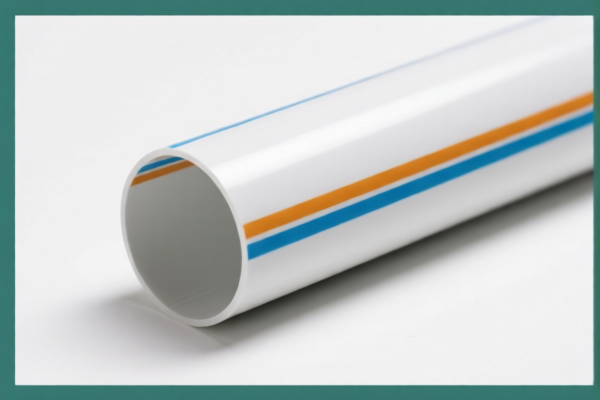| HS Code | Official Doc | Tariff Rate | Origin | Destination | Effective Date |
|---|---|---|---|---|---|
| 3917230000 | Doc | 58.1% | CN | US | 2025-05-12 |
| 3917320010 | Doc | 58.1% | CN | US | 2025-05-12 |
| 3904100000 | Doc | 61.5% | CN | US | 2025-05-12 |
| 3904400000 | Doc | 60.3% | CN | US | 2025-05-12 |




PVC Tube
PVC tube (Polyvinyl Chloride tube) is a versatile plastic pipe widely used in various applications. This entry details its material properties, common uses, functionality, and types.
Material
PVC is a thermoplastic polymer made from vinyl chloride monomers. It is inherently rigid and durable, though plasticizers are often added to increase flexibility. Key material characteristics include:
- Chemical Resistance: Highly resistant to acids, bases, and many chemicals, making it suitable for corrosive environments.
- Strength: Exhibits good tensile and compressive strength.
- Lightweight: Easier to handle and install compared to metal piping.
- Non-Conductive: Does not conduct electricity.
- Flame Retardant: PVC itself does not easily ignite, though it can release harmful fumes when burned.
Purpose & Function
The primary function of PVC tube is to convey fluids or solids. It serves as a conduit, providing a contained pathway for transport. Its uses stem from its ability to withstand pressure, resist corrosion, and maintain structural integrity over time.
Usage Scenarios
PVC tube finds application in a broad spectrum of industries:
- Plumbing: Drainage, waste, and vent (DWV) systems, potable water supply lines (specifically CPVC for hot water), irrigation.
- Construction: Conduit for electrical wiring, structural supports, fence posts.
- Industrial Processing: Chemical transfer, wastewater management, process piping.
- Agriculture: Irrigation systems, drainage solutions.
- Swimming Pools & Spas: Circulation pipes, filtration systems.
Common Types
PVC tube is manufactured in various schedules (thicknesses) and formulations, each suited for different applications:
- Schedule 40 PVC: The most common type, used for general-purpose plumbing, drainage, and irrigation. Offers a balance of cost and strength.
- Schedule 80 PVC: Thicker walls providing greater pressure resistance. Commonly used in industrial applications, chemical processing, and higher-pressure plumbing systems.
- CPVC (Chlorinated Polyvinyl Chloride): A more heat-resistant formulation used for hot water distribution systems.
- ASTM D2241 PVC: Specifically for pressure applications, meeting stringent standards for potable water.
- Electrical Conduit PVC: Formulated to meet electrical codes and standards, providing protection for wiring.
- Flexible PVC: Contains plasticizers for increased flexibility, used where bending is required.
It is important to select the appropriate type of PVC tube based on the intended application, pressure requirements, temperature, and chemical exposure.
The declared goods, “pvc tube”, refer to tubes constructed from polyvinyl chloride (PVC) material. These tubes are commonly used for fluid or gas conveyance, drainage, irrigation, or as structural components in various applications. Depending on the rigidity and reinforcement, different HS codes may apply.
The following HS codes are relevant based on the provided information:
-
3917230000: This HS code covers tubes, pipes and hoses and fittings therefor (for example, joints, elbows, flanges), of plastics, specifically rigid tubes, pipes and hoses of polymers of vinyl chloride. This would apply to solid, non-flexible PVC tubes.
- 39: Chapter 39 covers plastics and articles thereof.
- 17: Heading 3917 covers tubes, pipes and hoses and fittings therefor, of plastics.
- 230000: Subheading 3917230000 specifically identifies rigid tubes, pipes and hoses of polymers of vinyl chloride. The current total tax rate is 58.1%.
-
3917320010: This HS code covers tubes, pipes and hoses and fittings therefor (for example, joints, elbows, flanges), of plastics, specifically other tubes, pipes and hoses: flexible tubes, pipes and hoses, not reinforced or otherwise combined with other materials, without fittings of polyvinyl chloride. This applies to flexible, non-reinforced PVC tubes.
- 39: Chapter 39 covers plastics and articles thereof.
- 17: Heading 3917 covers tubes, pipes and hoses and fittings therefor, of plastics.
- 320010: Subheading 3917320010 specifically identifies flexible tubes, pipes and hoses, not reinforced or otherwise combined with other materials, without fittings of polyvinyl chloride. The current total tax rate is 58.1%.
-
3904100000: This HS code covers polymers of vinyl chloride or of other halogenated olefins, in primary forms: Poly(vinyl chloride), not mixed with any other substances. This would apply to the raw PVC material itself, before being formed into tubes.
- 39: Chapter 39 covers plastics and articles thereof.
- 04: Heading 3904 covers polymers of vinyl chloride or of other halogenated olefins, in primary forms.
- 100000: Subheading 3904100000 specifically identifies Poly(vinyl chloride), not mixed with any other substances. The current total tax rate is 61.5%.
-
3904400000: This HS code covers polymers of vinyl chloride or of other halogenated olefins, in primary forms: Other vinyl chloride copolymers. This applies to PVC material mixed with other substances.
- 39: Chapter 39 covers plastics and articles thereof.
- 04: Heading 3904 covers polymers of vinyl chloride or of other halogenated olefins, in primary forms.
- 400000: Subheading 3904400000 specifically identifies Other vinyl chloride copolymers. The current total tax rate is 60.3%.
Customer Reviews
No reviews yet.